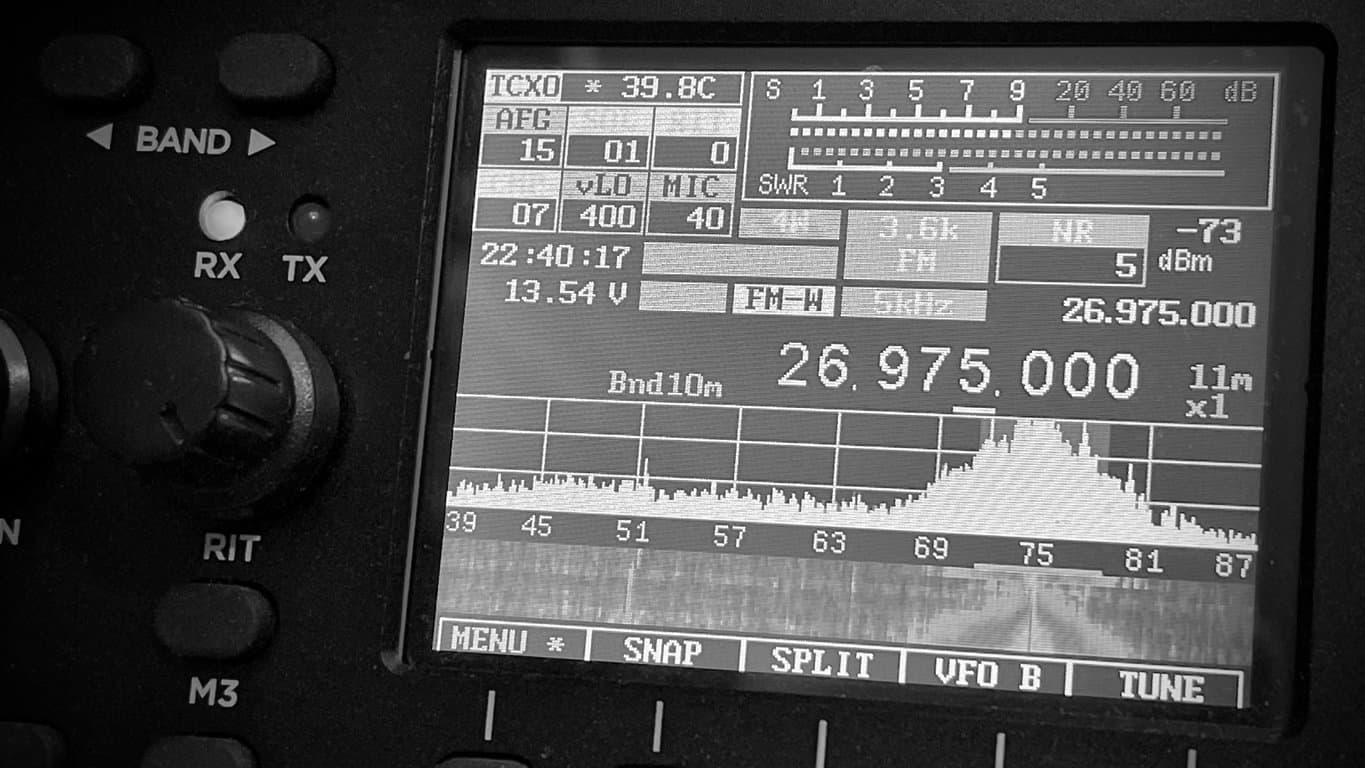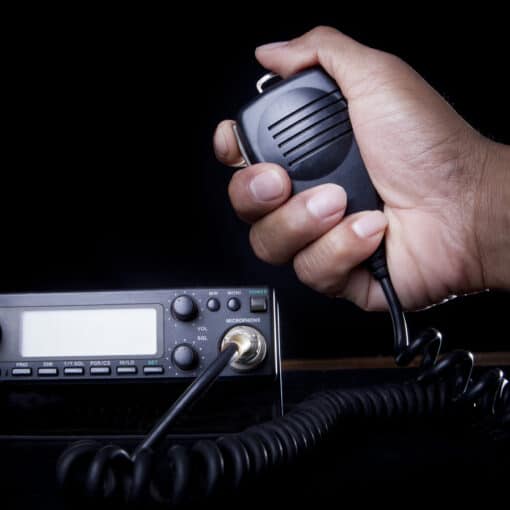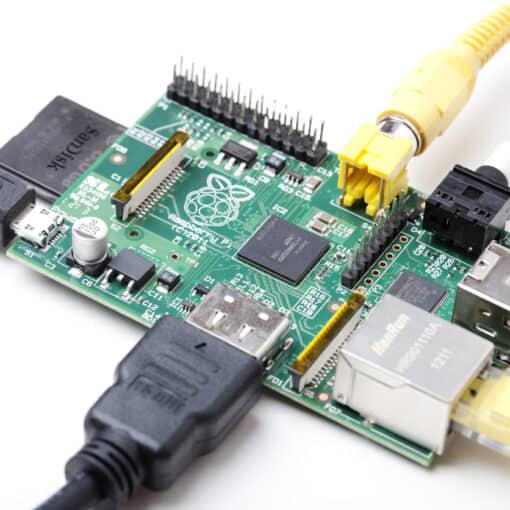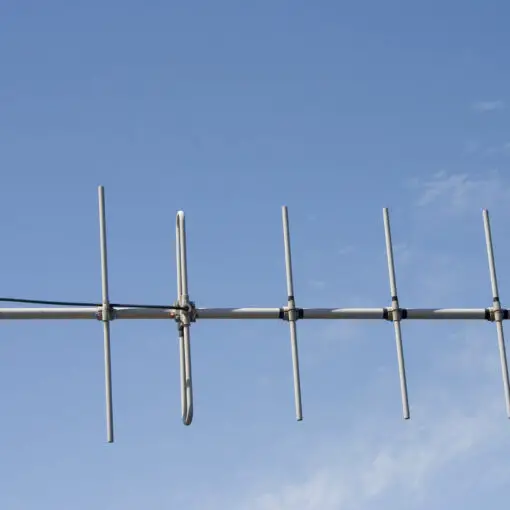Understanding Radio Frequency Propagation for Ham Radio is a crucial aspect of the hobby. Radio waves travel through the air and are affected by various factors, including atmospheric conditions, ionospheric layers, and solar activity. These factors can cause radio waves to bend, reflect, or refract, making it possible for Ham Radio operators to communicate over long distances.
To master Radio Frequency Propagation, Ham Radio operators must understand the different types of propagation and how they are affected by various factors. Ground wave propagation, for example, is used for short-distance communication, while sky wave propagation is used for long-distance communication. Understanding the characteristics of each type of propagation and the factors that affect them is essential for successful communication.
In this article, we will explore the different types of propagation, the factors that affect them, and how Ham Radio operators can use this knowledge to improve their communication capabilities. Whether you are a seasoned Ham Radio operator or just starting, understanding Radio Frequency Propagation is critical to your success in the hobby.
What is Radio Propagation?
Radio propagation refers to the way in which radio waves move through the atmosphere or space. It is the study of how electromagnetic radiation, including radio waves, travels from one point to another. Understanding radio propagation is essential for ham radio operators who need to communicate over long distances.
Electromagnetic Waves
Electromagnetic waves are a type of energy that travels through space at the speed of light. They are made up of two components: electric and magnetic fields. These fields are perpendicular to each other and to the direction of wave propagation.
Electromagnetic waves are classified based on their frequency. The frequency of a wave is the number of oscillations it makes per second. Radio waves are a type of electromagnetic wave with frequencies ranging from 3 kHz to 300 GHz.
Radio Waves
Radio waves are a type of electromagnetic wave that is used for communication. They are produced by oscillating charges, such as those in an antenna. Radio waves can travel through the atmosphere or space and can be received by a radio receiver.
Radio waves are affected by the medium through which they travel. They can be reflected, refracted, diffracted, or absorbed by various materials in the atmosphere. Understanding how radio waves interact with the atmosphere is essential for predicting their propagation characteristics.
In summary, radio propagation is the study of how radio waves move through space or the atmosphere. Electromagnetic waves, including radio waves, are a type of energy that travels through space at the speed of light. Radio waves are produced by oscillating charges and can be affected by the medium through which they travel.
Factors Affecting Radio Propagation
Radio propagation refers to the behavior of radio waves as they travel through the atmosphere. A number of factors can affect radio propagation, including atmospheric conditions, the ionosphere, sunspots, and solar flux index.
Atmospheric Conditions
Atmospheric conditions can have a significant impact on radio propagation. For example, thunderstorms can produce static that can interfere with radio signals. Similarly, fog, rain, and snow can also cause interference. On the other hand, clear skies can allow radio signals to travel further and more clearly.
Ionosphere
The ionosphere is a layer of the Earth’s atmosphere that is ionized by solar radiation. It can reflect radio waves back to the Earth’s surface, allowing them to travel further than they would otherwise. However, the ionosphere is not always consistent, and its properties can change depending on a number of factors, including time of day and season.
Sunspots
Sunspots are dark areas on the surface of the sun that are associated with increased magnetic activity. This increased activity can affect radio propagation, as it can cause changes in the ionosphere that can affect the behavior of radio waves. Sunspot activity tends to be cyclical, with peaks and troughs occurring roughly every 11 years.
Solar Flux Index
The solar flux index (SFI) is a measure of the amount of radio energy that is emitted by the sun. It is related to sunspot activity, but is a more direct measure of the amount of energy that is available for radio propagation. A higher SFI generally corresponds to better radio propagation conditions.
In summary, radio propagation is affected by a number of factors, including atmospheric conditions, the ionosphere, sunspots, and solar flux index. Understanding these factors can help ham radio operators to optimize their transmissions and improve their chances of making successful contacts.
Types of Radio Propagation
Radio propagation refers to the way in which radio waves travel through the atmosphere. There are several types of radio propagation, each with its own unique characteristics and applications. Understanding these different types of propagation is essential for ham radio operators to communicate effectively.
Ground Wave Propagation
Ground wave propagation occurs when radio waves travel along the surface of the earth. This type of propagation is most effective at lower frequencies and is typically limited to distances of a few hundred miles. Ground wave propagation is often used for local communication, such as between two stations located in the same city or region.
Line-of-Sight Propagation
Line-of-sight propagation occurs when radio waves travel in a straight line from the transmitting antenna to the receiving antenna. This type of propagation is most effective at higher frequencies and is typically limited to distances of a few dozen miles. Line-of-sight propagation is often used for communication between two stations located within visual range of each other, such as between two mountaintops.
Tropospheric Scatter
Tropospheric scatter occurs when radio waves bounce off the troposphere, the lowest layer of the earth’s atmosphere. This type of propagation is most effective at frequencies between 100 MHz and 1 GHz and is typically limited to distances of a few hundred miles. Tropospheric scatter is often used for communication between two stations that are not in line-of-sight of each other, such as between two stations separated by a mountain range.
Skywave Propagation
Skywave propagation occurs when radio waves are refracted by the ionosphere, a layer of charged particles in the upper atmosphere. This type of propagation is most effective at frequencies between 3 MHz and 30 MHz and can allow communication over thousands of miles. Skywave propagation is often used for long-distance communication, such as between two stations on different continents.
Space Propagation
Space propagation occurs when radio waves are transmitted directly into space, typically using satellites. This type of propagation is most effective at frequencies above 1 GHz and can allow communication over vast distances, such as between two stations on opposite sides of the earth. Space propagation is often used for satellite communication, such as for global positioning systems (GPS) and satellite phones.
In summary, understanding the different types of radio propagation is essential for ham radio operators to communicate effectively. Each type of propagation has its own unique characteristics and applications, and choosing the right type of propagation for a given situation is key to successful communication.
HF Propagation
HF propagation refers to the behavior of radio waves in the high-frequency range (3-30 MHz) as they travel through the ionosphere. The ionosphere is a layer of the Earth’s atmosphere that contains charged particles, allowing it to reflect radio waves back to the ground. Understanding HF propagation is essential for ham radio operators to communicate over long distances.
HF Frequencies
HF frequencies range from 3-30 MHz, and they are split into several bands. Each band has its unique characteristics, and the radio waves behave differently in each band. The most commonly used bands for ham radio operation are the 80m, 40m, 20m, 15m, and 10m bands.
HF Bands
The table below shows the different HF bands, their frequencies, and their characteristics.
| Band | Frequency Range | Characteristics |
|---|---|---|
| 80m | 3.5 – 4.0 MHz | Good for local communication, especially at night. |
| 40m | 7.0 – 7.3 MHz | Good for medium-range communication during the day. |
| 20m | 14.0 – 14.35 MHz | Good for long-range communication during the day and night. |
| 15m | 21.0 – 21.45 MHz | Good for long-range communication during the day. |
| 10m | 28.0 – 29.7 MHz | Good for long-range communication during the day when the sunspot cycle is active. |
HF Operation
Ham radio operators use a variety of modes to communicate on HF bands. The most popular modes are voice (SSB), Morse code (CW), and digital modes like FT8 and PSK31. Each mode has its unique advantages and disadvantages, and operators should choose the mode that best suits their needs.
Propagation Data
HF propagation is affected by several factors, including solar activity, time of day, and the ionospheric conditions. Radio operators can use propagation prediction tools like VOACAP to determine the best time and frequency to communicate with other stations. The HF Propagation Map shows real-time radio propagation from stations operating on 11 bands between 1.8 and 54 MHz in the amateur radio service. The display shows worldwide activity from the last 15 minutes and is automatically updated about every minute.
In conclusion, understanding HF propagation is essential for ham radio operators to communicate over long distances. By knowing the characteristics of each HF band, choosing the right mode, and using propagation prediction tools, operators can maximize their chances of successful communication.
Antennas for Radio Propagation
Antennas are a crucial component in radio propagation. They are the means by which radio waves are transmitted and received. There are many different types of antennas, each with its own strengths and weaknesses. Some of the most common types of antennas used in ham radio are:
- Dipole Antennas: A dipole antenna is a simple, wire antenna that is fed at the center. It is one of the most popular types of antennas used in ham radio due to its simplicity and effectiveness. Dipole antennas are typically used for short to medium range communication.
- Vertical Antennas: A vertical antenna is a type of antenna that is mounted vertically. It is commonly used for mobile and base station applications. Vertical antennas are effective for long range communication.
- Yagi Antennas: A Yagi antenna is a directional antenna that is commonly used for weak signal reception. It consists of a driven element and one or more parasitic elements. Yagi antennas are commonly used for VHF and UHF communication.
- Loop Antennas: A loop antenna is a type of antenna that is shaped like a loop. It is commonly used for receiving weak signals in the medium frequency (MF) and high frequency (HF) bands.
When selecting an antenna for radio propagation, it is important to consider factors such as frequency range, power handling capability, and gain. The frequency range of the antenna should match the frequency range of the radio being used. The power handling capability of the antenna should be sufficient to handle the power output of the radio. The gain of the antenna should be sufficient to provide the desired coverage area.
In addition to the type of antenna used, the location and height of the antenna can also have a significant impact on radio propagation. Antennas should be located in a clear area, away from obstructions such as buildings and trees. The height of the antenna should be as high as possible to increase the coverage area.
In conclusion, antennas are a critical component in radio propagation. There are many different types of antennas available, each with its own strengths and weaknesses. When selecting an antenna, it is important to consider factors such as frequency range, power handling capability, and gain. The location and height of the antenna can also have a significant impact on radio propagation. By selecting the right antenna and optimizing its location and height, ham radio operators can achieve optimal radio propagation.
Successful Communication with Ham Radio
To achieve successful communication with ham radio, several factors must be considered. These include the time of day, season, weather conditions, and the operator’s experience.
Time of Day
The time of day plays a critical role in ham radio communication. During the day, radio waves travel farther due to ionospheric refraction, which allows them to bounce off the ionosphere and back to the earth’s surface. At night, however, the ionosphere becomes less dense, reducing the distance radio waves can travel.
Season
Seasonal changes also affect radio wave propagation. During the winter months, the ionosphere is denser, allowing radio waves to travel farther. Conversely, during the summer months, the ionosphere is less dense, reducing the distance radio waves can travel.
Weather Conditions
Weather conditions such as rain, snow, and fog can also affect radio wave propagation. These weather conditions can cause attenuation, which weakens the radio signal, and scattering, which causes the radio waves to scatter in different directions.
Ham Radio Experience
An operator’s experience is also a critical factor in successful communication. Experienced operators know how to adjust their equipment and use different propagation modes to achieve successful communication. They also know how to take advantage of favorable propagation conditions and avoid unfavorable conditions.
In summary, achieving successful communication with ham radio requires considering several factors, including the time of day, season, weather conditions, and the operator’s experience. By taking these factors into account, operators can increase the likelihood of successful communication.





